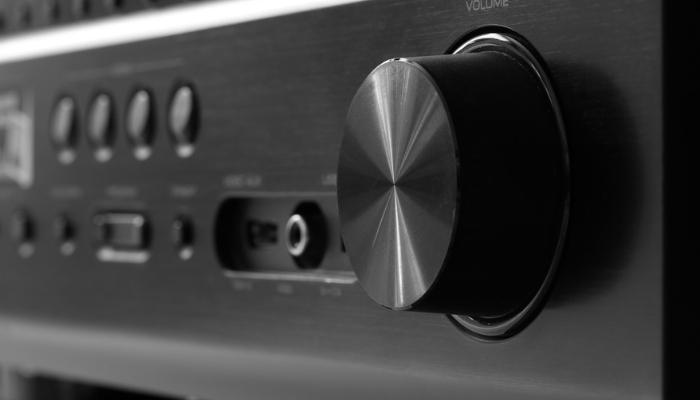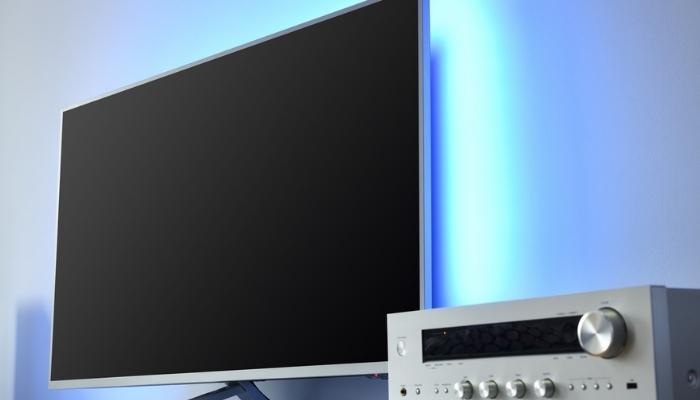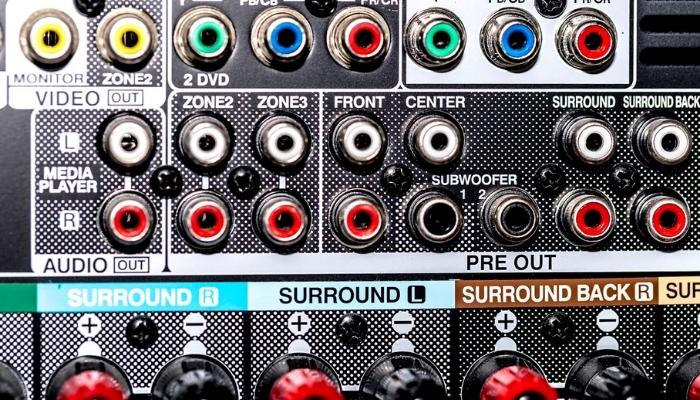When it comes to creating your ideal home theater, you know you need the basics, a good screen, and incredible audio. But what happens when the audio and visual don’t match up? Utter chaos!
But not to worry; all you need is an AV receiver! An audio video receiver is made up of both the amplifier and the electronic package. The electronic package includes the tuner, the volume control, source selector, and digital decoding, among others. All these components work together inside the receiver to balance your audio and video quality, so each one comes out pristine. So, how do you find the right one for you? Don’t worry; we’ll go through what you need to know to make your home theater experience completely seamless!
Power
The first thing to consider for your AV receiver is the power. Most of the time, people mistake power for how much volume you get from you your AV receiver. Power is measured in watts and indicates the power to provide clear sound over extended periods. In other words, the higher the wattage of your receiver, the better the sound quality, regardless of whether the volume of whatever you are watching or listening to is medium or low.
So, the amount of power needed varies and depends on whether you have a music-oriented stereo system or a home theater system. This is because the stereo system is simpler and does not have the same requirements as the home theater since the home theater system is better known for its loud, immersive sound.

Input and Output
Another consideration for your AV receiver is the inputs and outputs. The higher the number of inputs and outputs your receiver has, means you can connect to many more devices such as laptops, iPods, phones, etc. Simply decide how many external devices you wish to connect, and then select a receiver with as many ports that match that amount as possible.
It is also going to be more worthwhile getting the receiver with 4k compatibility now that 4k streaming is in full force. And if you want to connect your phone, find one that also has a USB port.
Wi-Fi, Airplay, and Bluetooth
Since most of your home theater has some type of wireless connection to play your media, it’s a nice addition if your receiver also has wireless capability. Even if you have a lot of inputs and outputs, you still might need a wireless connection sometimes. Of course, it's much more comfortable when you don't need to use wires for connections, and the ease of sharing files from your gadgets is a big plus. When you have Wi-Fi and airplay, you can also easily stream music from apps that allow wireless and remote airplay.

Channels
One thing you’ll see a lot when shopping for AV receivers is the channels, but don’t worry; it’s not as complicated as it seems. In a nutshell: The more channels you have, the more speakers you can add, and the richer and more immersive the sound will be as you add speakers. Even though the majority of audio formats only need 2 channels (left and right), true home theater surround sound has no bounds. In order to get surround sound, however, you will need at least 5 channels. But for an unbelievable movie experience, you’ll need a receiver with 7 channels.

Research and Customer Reviews
It is very important to do research on customer reviews on any product before you buy them. Be sure to look through credible websites or come on in to Toton’s TV to ask us about the receiver you want to buy. You are sure to find a reliable product as well as one that's budget-friendly!
When you choose a good audio video receiver, you are guaranteed a good sound experience for a long time to come! So, don't just buy the first one you see. If you have any questions or want more insights on an AV receiver, just give us a call or stop by, and we'll be glad to help!